Ocean Week in Review – May 21, 2021
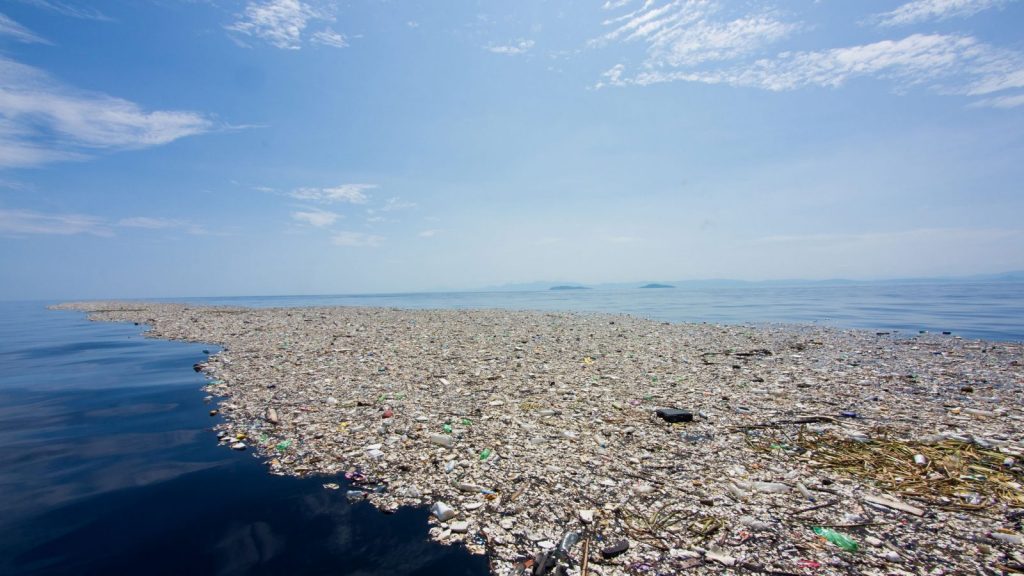
1. Businesses and Banks Behind Global Plastic Waste Crisis
A new report shows just 20 companies produce over 50% of all single-use plastic while 100 companies are behind 90% of global single-use plastic production. The Plastic Waste Makers Index shows a small group of petrochemical companies who manufacture polymers – the building block of plastics – are the source of the plastics crisis. Top financial institutions enabling plastic waste generation were also identified. Close to 60% of commercial financing funding single-use production comes from just 20 global banks. A 30% increase in global throwaway plastic production is projected over the next five years leading to an extra three trillion pieces of plastic waste by 2025. The analysis also shows the biggest contributors to the plastics crisis are Australia and the United States which each produce more than 50 kg per person per year compared to 18 kg in China and 4 kg in India.
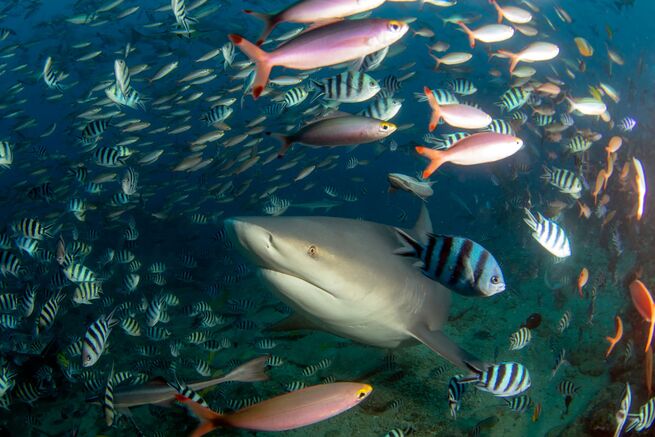
2. The Pandemic Helped the Ocean in Noise and CO2 Emission Reduction
For many, incredible animal sightings have been one of the few highlights of pandemic life. Of course, the pandemic’s impact on the ocean is complicated. Many researchers have lost the opportunity to continue their fieldwork, conservation projects have been delayed and plastic pollution has increased during the pandemic (PPE was found on almost 30 percent of British beaches cleaned by Marine Conservation Society volunteers). The sudden, drastic reduction in human activity has given researchers the opportunity to study how the ocean has responded to our lifestyle changes. The pandemic offered the opportunity to further distill the impacts of anthropogenic ocean noise and insights into how man-made marine noise impacts whales’ stress levels. Researchers also uncovered that CO2 emissions were expected to fall up to 8 percent in 2020 due to pandemic restrictions but carrying these positive impacts forward will depend on human response post-pandemic.
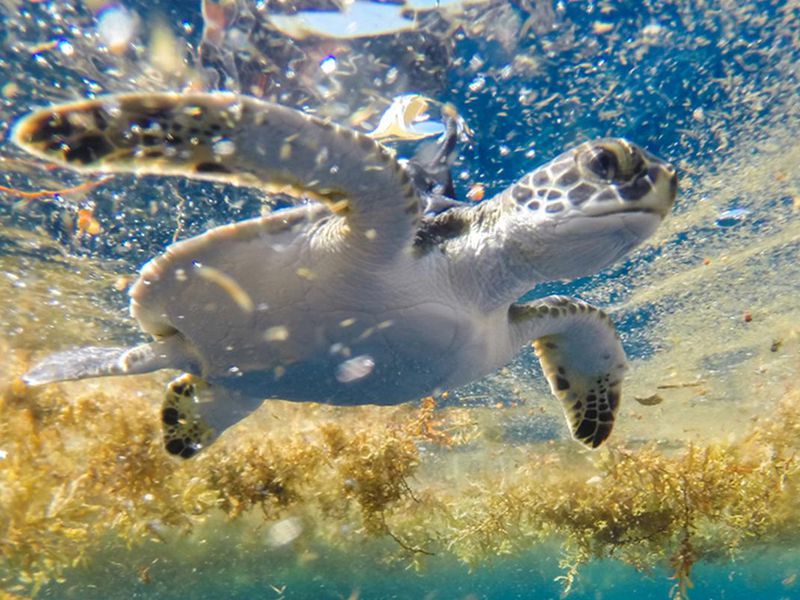
3. Baby Sea Turtles Spend ‘Lost Years’ in Sargasso Sea
A new study finds that after hatching on beaches along the coast of Florida and heading out to sea, young green sea turtles spend their early lives in the Sargasso Sea. Researchers glued tracking devices to the shells of 21 three-to-nine-month-old green sea turtles. Once fitted with solar-powered tracking tags about the size of an AA battery, the researchers released the turtles back into the sea about ten miles offshore from the beach where they were born. This is the first time green sea turtles of this age and size have ever been tracked. Fourteen of the 21 turtles hitched a ride north on the Gulf Stream current before heading into the Sargasso Sea. The results offer new evidence that the Sargasso Sea is a critical habitat for sea turtles and could guide conservation efforts. Future studies will look to capture and tag turtles already in the sargassum to see how long they stay there.
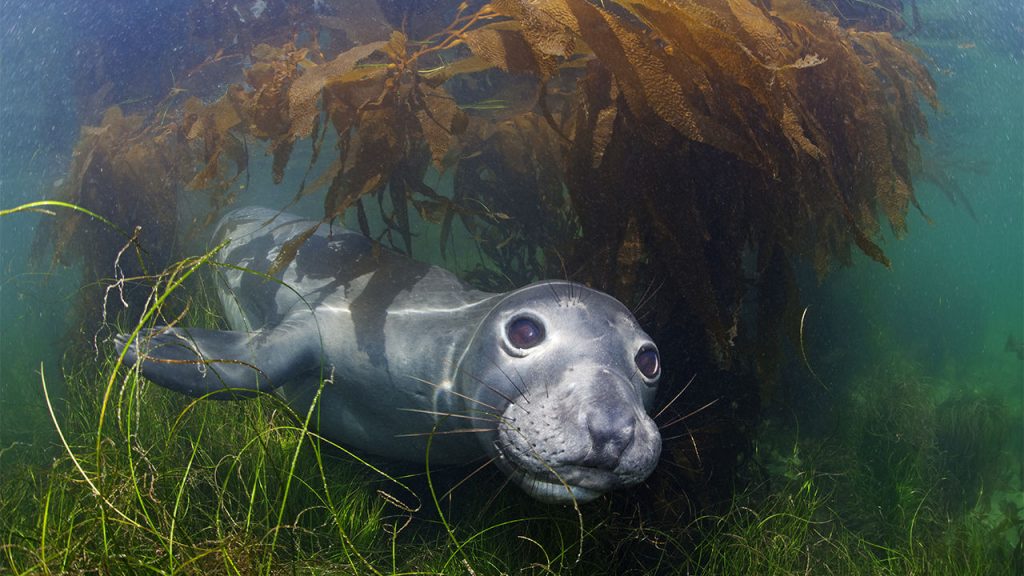
4. Female Elephant Seals Hunt Nonstop, Sleeping Just 1 Hour a Night
After the winter breeding season, female northern elephant seals spend more than 19 hours—and up to 24 hours—per day hunting in the northern Pacific Ocean, killing up to 2000 small fish daily to survive, according to a new study. The study, devised by U.S. and Japanese researchers, was made possible by cameras and devices attached to the seals’ heads, could also help scientists monitor other deep-ocean life including the abundance and type of fish. The seals appear onshore only twice a year to mate or give birth in winter and to shed their fur in early spring, spring the rest of the year – almost 10 months – fishing. The exhausting lifestyle eventually pays off as it helps them regain the fat they lose on land, when they forgo all food, and gain around 100 kilograms during their first two months back at sea.
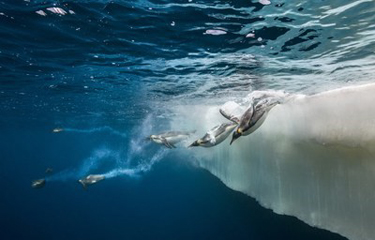
5. US, EU to Push Harder for Proposed Antarctic Marine Protected Areas
The U.S. and the E.U. are leading a push for the designation of two marine protected areas in the Southern Ocean surrounding Antarctica, the East Antarctic and Weddell Sea MPAs, to be overseen by the Commission for the Conservation of Antarctic Marine Living Resources (CCAMLR). The designations would move the world nearly 1 percent closer to achieving the goal of protecting 30 percent of the global ocean, called for in 2016 by the IUCN and announced by President Biden as a U.S. policy goal. Jockeying for stocks of krill, however, has become a proxy for a wider geopolitical competition, which has prevented consensus on new marine protected areas at CCAMLR meetings since first being debated in 2002. Dimitri Sclabos, head of krill-oil consultancy Tharos, said the designation of new MPAs should not be “a zero-sum game … Conservation and well-managed commercial activity should work together.”
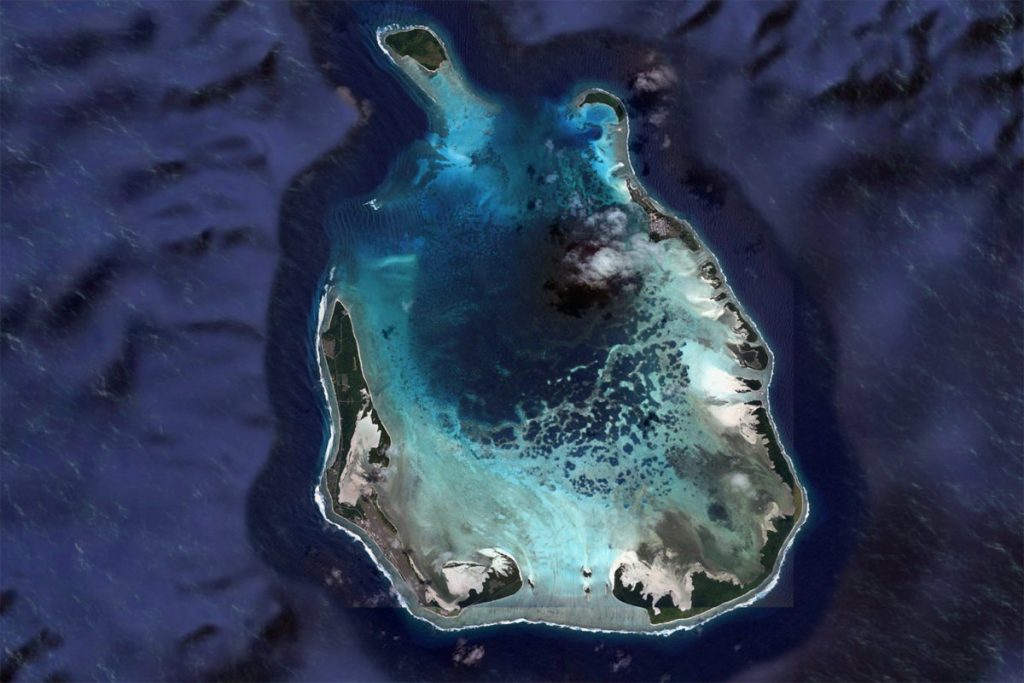
6. Two New Australian Protected Marine Parks
The Australian government moved to create two new marine protected areas that cover an expanse of ocean twice the size of the Great Barrier Reef Marine Park. The two parks will be established around Christmas Island and the Cocos (Keeling) Islands in the Indian Ocean to the northwest of continental Australia, known for their red crab migration, rainforests, pristine beaches, and reefs that provide unique marine habitats. The new parks, which cover to 740,000 square kilometers (286,000 square miles) of ocean, raise the protected share of Australia’s oceans from 37% to 45% – a significant step toward helping increase the protection of 30% of global oceans and land by 2030. The decision was immediately welcomed by conservation groups, although some are also encouraging the Australian government to work together with local communities to “co-design” the protected areas to ensure their livelihoods and culture are preserved.
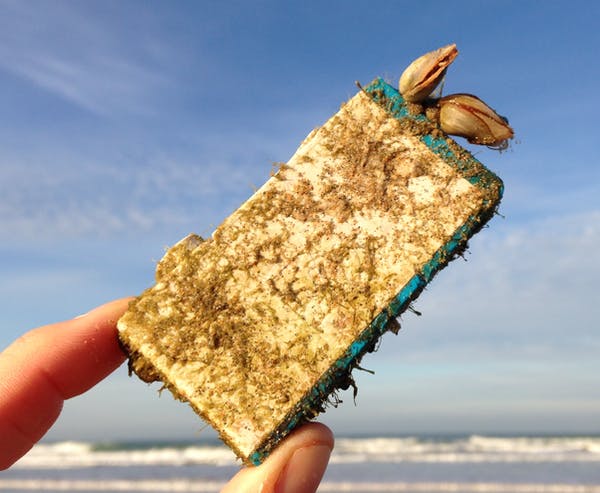
7. Cargo Spill from New York to Norway Reveals How Currents Disperse Ocean Plastics
Several thousand shipping containers are lost overboard each year, plunging quickly toward the seabed, often rupturing under pressure or from impact with the ocean floor. Articles with a density close to or lower than seawater, including many plastics, disperse to the ocean surface, where they’re often carried thousands of miles. Most container losses go unreported and undocumented, because there is no declaration requirement unless the contents are hazardous in nature and pose an immediate threat to the environment (the IMO recently established an action plan that would consider compulsory declaration of plastic litter from these containers, however). Depending on the location of a spill, cargo that floats on the sea’s surface provides an opportunity for scientists to further study ocean circulation and disbursement of the debris through new methods such as social media and oceanographic modeling to demonstrate contributors to global ocean plastic pollution.
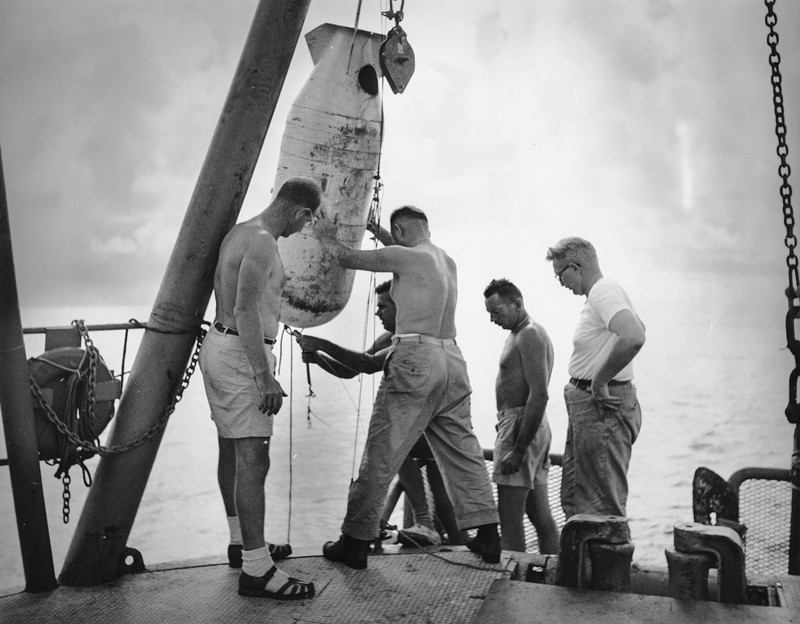
8. How U.S. Navy Funding Changed the Course of Sea Science
A new book on the history of U.S. oceanography asserts the ways in which military funding was used to direct research through several key oceanographic research centers influenced ocean discovery and the future of oceanography itself. Science on a Mission: How Military Funding Shaped What We Do and Don’t Know about the Ocean by Naomi Oreskes (Univ. Chicago Press, 2020) explores the complexities of research driven by the military, as part of historians’ concern with how the U.S. government’s enormous investments after the Second World War might have significantly contributed to scientific advances. She offers case histories of oceanographic research that offer insights extending to multiple fields where research funding from the U.S. Navy both solved for military research questions and changed the future of science, especially areas related to climate change, the role of the oceans in regulating temperature, and acoustics and communications.
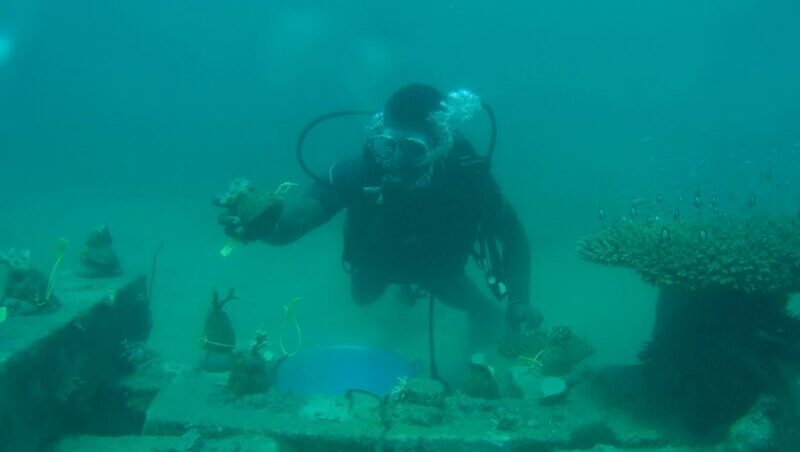
9. Women and Youth Leading Kenya’s Coral Reef Revival and Providing Jobs
The Wasini Beach Management Unit (BMU) is a 600-member group rehabilitating corals and seagrass along the Shimoni-Vanga coast in Kenya where rising sea temperatures bleached the corals and destroyed vital marine habitats. Kenya’s Marine and Fisheries Research Institute (KMFRI) launched a project with funding by the Kenya Adaptation Fund in 2014 aimed at mobilizing islanders to restore their marine environment. The BMU started a coral fragment and seagrass nursery and designated an area for conservation, training around 40 young people and women how to harvest, protect, transplant, grow, and clean the coral and seagrass. The group introduced a fishing ban on the community preserved marine area and replanted it with seagrass and corals to rehabilitate the area, enable fish to reproduce, grow, and spread to surrounding reefs and influencing a rise in fish stocks.
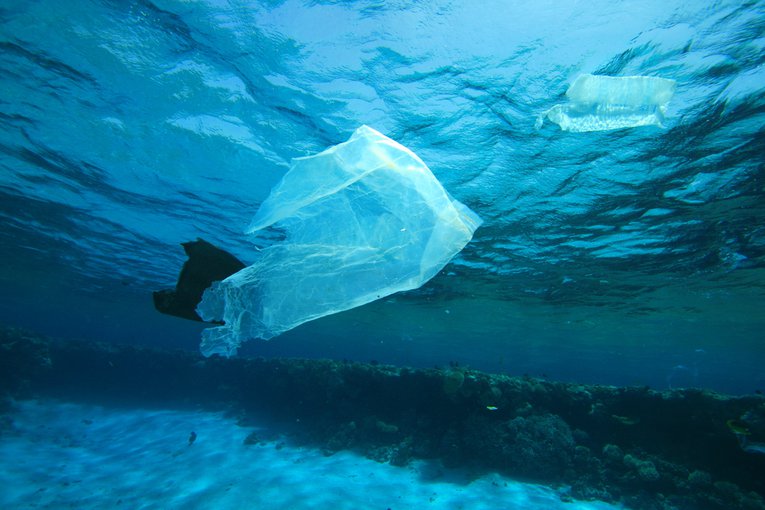
10. Plastic Bag Charge to Increase in England
In an effort to curb the amount of plastic entering the seas, the charge for single-use plastic bags in England is set to increase from 5p to 10p this month. This will affect all businesses in England, having previously only been compulsory for businesses with 250 employees or more. Since introduction of the 5p bag charge, there has been a 60% drop in the number of plastic bags on UK beaches which has heavily influenced the increase in the charge by the government. The average person in England now buys just four single use bags a year, compared to around 140 in 2014. Some stores are even piloting the removal of single-use bags altogether, asking customers to bring their own or to buy a reusable bag.
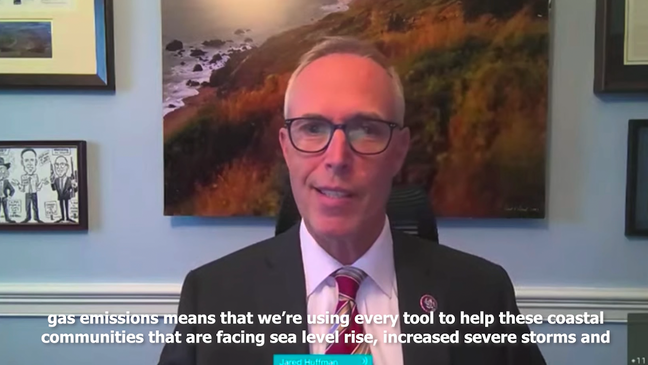
11. House Committee Holds Hearing on Bill to Ban Offshore Drilling
The U.S. House Natural Resources Committee held a hearing this week on protecting coastal communities and ocean resources from offshore drilling, which included consideration of the North Pacific Ocean Protection Act (HR 3048) introduced by Rep. Jared Huffman (D-CA). The bill would prohibit new oil and gas leases off the coasts of Northern and Central California, Oregon, and Washington, ensuring a sustainable future for coastal communities and the millions of jobs and billions of dollars in wages that depend on healthy oceans and coasts. At the hearing, Rep. Huffman noted the bill would “reduce emissions and invest in renewable energy all while reducing risks and making sure that our coasts are clean, safe, and available to all Americans, not a sacrifice zone for the fossil fuel industry.”
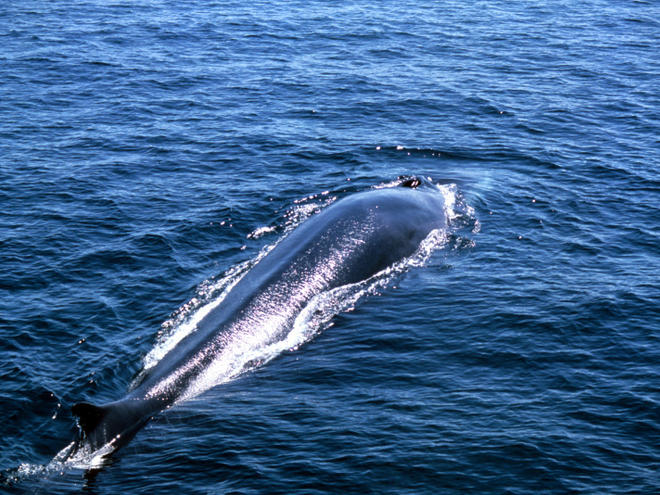
12. Following Whale Deaths, Chilean Researchers Call for Greater Protections
Between April 9 and 16, ship strikes killed a blue whale, a Bryde’s whale, and a humpback whale around the Chilean coast. Researchers typically expect to hear of about one whale death within Chile from any cause each month or two, though whale deaths are also thought to be underreported. Chilean scientists are now asking the government to take steps to prevent more accidents. Earlier this month, 65 marine mammal specialists submitted a plea, published in the popular Chilean newspaper, La Tercera, asking for the government to reroute ships away from sensitive regions, set speed limits in certain shipping lanes, establish an alert system to warn vessel pilots of nearby whales, and increased whale conservation research. The letter is an outgrowth of an emerging effort to organize Chile’s cetacean scientists under a new Chilean Society of Marine Mammal Specialists.
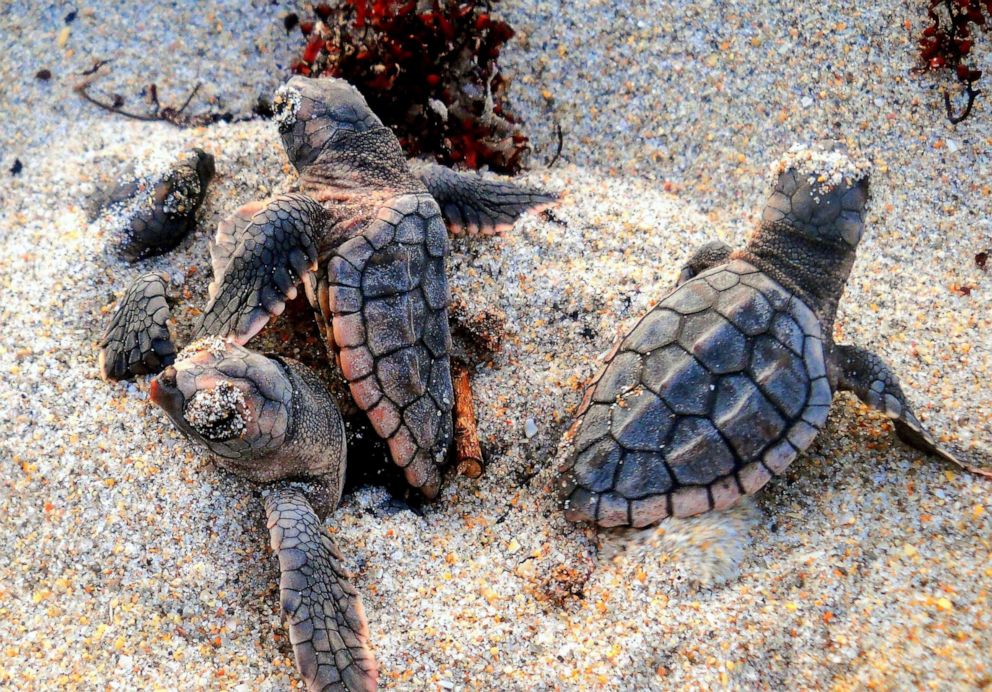
13. Battle Brewing Between Turtle Rescuers, Florida’s Wildlife Commission
Every year between March and October, multiple species of sea turtles swim up to Florida’s shores to lay their eggs. Once the hatchlings emerge, they face a multitude of human-made obstacles, such as hotel lights, and the majority of them in Broward County never make it to the ocean. To help, volunteers deter residents and tourists from interfering with nests and collect the just-hatched turtles into buckets to move them into the “splash zone” near the water. Earlier this year, the FWC sent letters to rescue organizations that permits for the work are being phased out as many local ordinances have been enacted to help protect the turtles. Although the FWC claims the turtle programs in Florida have been successful, the state may not be seeing the results of their conservation efforts yet, as it typically takes 25 years for recovery efforts to manifest into larger populations.
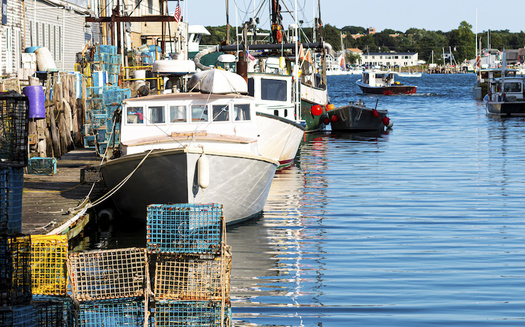
14. Fishing to Play Key Role in Next Decade of Conservation Efforts
Members of the Maine fishing industry are among those looking forward to having a seat at the table, to make progress toward the new Biden Administration goal to protect 30% of U.S. ocean waters by 2030. The U.S. Interior Department released its America the Beautiful report last week, which outlines steps to restore biodiversity, curb climate change, and increase access to natural spaces. The report highlights eight key principles for the next ten years of American conservation efforts, including committing to collaborating with key stakeholders, agencies and tribes, supporting locally led conservation projects and honoring tribal sovereignty and private property rights. Maine fishermen’s and business groups are eager to participate in this process as they play a critical role in sustaining ecosystems and providing expertise for various conservation efforts.
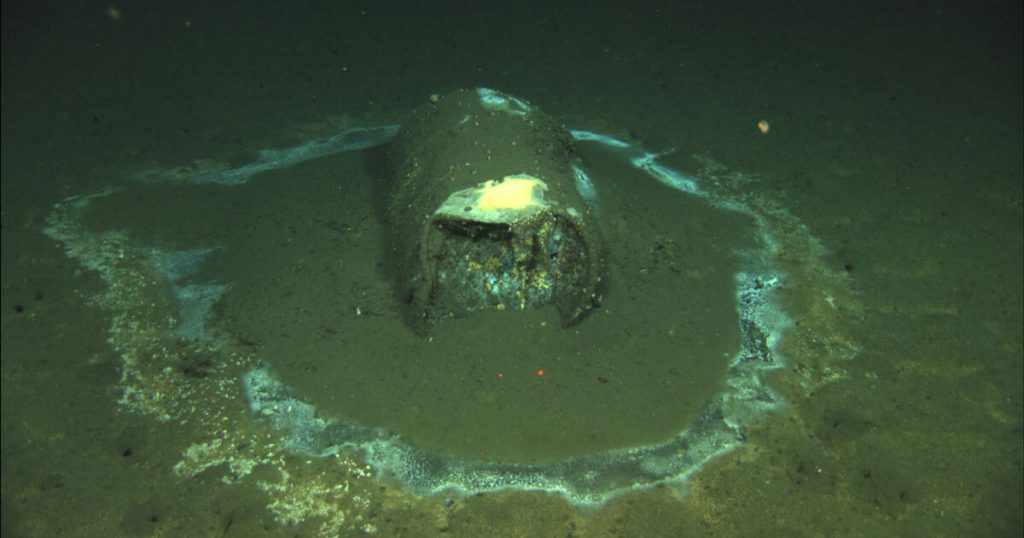
15. LA DDT Dumpsite Awaits Cleanup as More of its Damages Come to Light
A research vessel in March discovered and photographed over 27,000 barrels lying on the sea floor about 12 miles offshore Los Angeles, some still leaking toxic waste, which scientists believe to be DDT. Dichloro-diphenyl-trichloroethane (DDT) is a highly toxic insecticide that was once used widely throughout the world, primarily as an agricultural pesticide. Scientists have been aware of the negative effect of the toxic chemical on animals up the marine food chain, from zooplankton to pelicans to sea lions, and leading to mass die-offs of bees and insects as well as sea birds. Despite the growing concern, a cleanup action that could remove these barrels dumped decades ago remains out of sight so far. In a statement after being briefed by researchers, California Senator Dianne Feinstein described the finding as “one of the biggest environmental threats on the West Coast.”
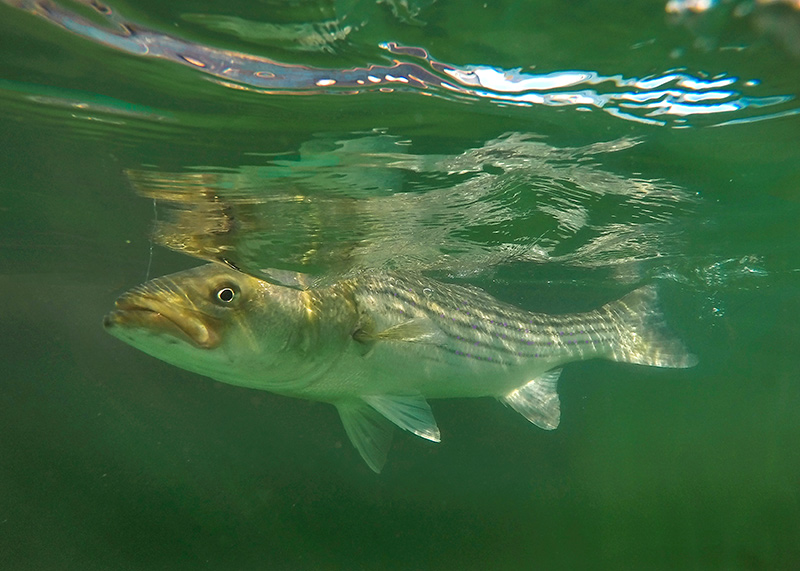
16. Help’s On the Way for Depleted Striped Bass
Striped bass are overfished, according to the most recent stock assessment. Last month, the Atlantic States Marine Fisheries Commission, which manages striped bass in state waters, received thousands of comments on a public information document used to relate issues that could be included in Amendment 7 of the striped bass management plan. The aim is to establish new regulations for the 2022 fishing season. Anglers hope to have the board incorporate many of the conservation options that they suggested for the amendment. “For many of the commission’s species,” commission chairman Patrick Keliher said, “we are no longer in a position to hold hope that things will revert to what they have previously been if we just hold static.” the Striped Bass Management Board approved the following issues for development in Draft Amendment 7: Recreational release mortality, conservation equivalency, management triggers and measures to protect the 2015 year class.
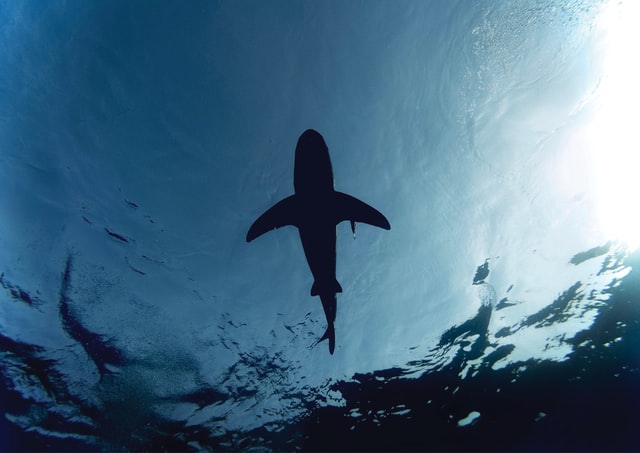
17. Sharks in Protected Area Attract Illegal Fishers
Thousands of sharks have been illegally caught in a Marine Protected Area (MPA) in the Indian Ocean, new research shows. The MPA was created in 2010 around the Chagos Archipelago, also known as the British Indian Ocean Territory (BIOT), banning all fishing there. The new study examined information on illegal fishing in the MPA — a vast (640,000 km²/250,000 mi²) area containing pristine and remote reefs. Enforcement data suggests more than 14,000 sharks were caught in the MPA from 2010-20, but discussions with fishers in the region suggest the true number was “considerably higher.” Fishers told the researchers that vessels often fished in the MPA without being detected. It’s crucial to work with fishing communities to understand where, when and why people fish illegally — and how we can improve deterrence.
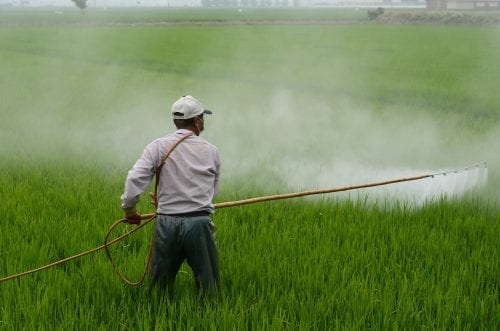
18. Widely-Used Herbicide Affects Diatoms in Biofilms
Glyphosphate is a broad-spectrum systemic herbicide used in over 130 countries worldwide to control weeds in agriculture and at home. Marketed as safe for animals (including humans) and as readily broken down into natural substances, glyphosate-based weed killers have been used since the 1970s. However, controversy surrounds the popular herbicide with the manufacturer settling class-action lawsuits alleging the carcinogenic properties of the chemical. While glyphosphate can break down in soil, its half-life varies depending on the environment it is used in and it can be washed into aquatic habitats. Though considered to have a low toxicity for aquatic fauna, new research by Corralesm Meerhoff and Antoniades, has demonstrated it can have a devastating effect on aquatic biofilms, which are important in bioremediation as well as cycling organic matter.
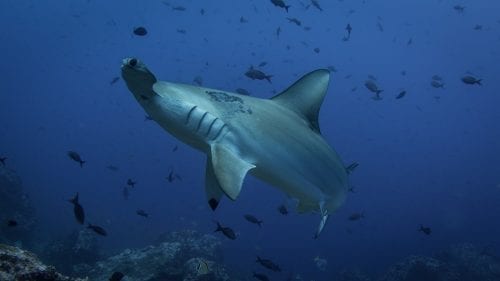
19. Mislabelling in Brazil Conceals Illegal Trade in Endangered Ocean Species
Brazil is one of the world’s largest markets for elasmobranch products. While there are regulations in place to control the trade in many of these species those regulations may not always be effective. A policy analysis by Alvarenga et al. (2021) has found that the regulations are not effective across all of the different forms of trade. While supermarket goods were always accurately labelled those in restaurants, fishmongers and street markets weren’t. The study, which used molecular phylogenetics to identify the exact species sold in 221 businesses in Rio de Janeiro found that 46% of elasmobranch products in restaurants were mislabeled, 56% in fishmongers and a staggering 86% in street markets. Most concerning of all was the following: “Over 60% of the samples were derived from threatened species, reaching 90% in guitarfish and 100% in ray products.”

20. Seeking Common Ground on Conservation with Fishing and Wind Energy in Ireland
A new vision for how the fishing and marine wind energy industries might sustainably coexist with native wildlife including puffins, oyster beds, and kelp forests off the Irish coasts, needs to be agreed by all parties, the Oireachtas Committee on Climate Change has been told. The committee is examining the marine sector’s contribution to a 51 percent reduction in Ireland’s carbon emissions by 2030. On Tuesday, committee members were told Ireland’s seas were already under increasing pressure from pollution, invasive species and climate change. Seabird species such as Puffins and Kittiwake were experiencing significant declines in Ireland and 13 percent of the Irish seabed had been disturbed by bottom fishing. A plan must be developed that balances resource and energy development with the protection of puffins and other species along Ireland’s coasts.
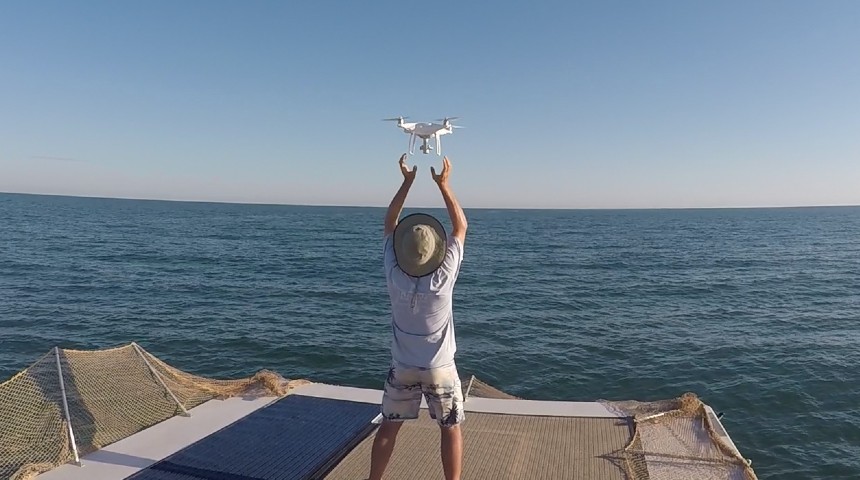
21. Saving the Dugong with Marine Research Drones
For marine scientists, undertaking research into sea mammals like dugongs in remote locations has always been difficult. The use of drone technology is making marine conservation efforts more affordable, accessible, and reliable. Two years ago, an international team of collaborators decided to take a new approach to wildlife surveying. Trialing their novel method in the remote waters of the Pilbara in Western Australia, the researchers operated drones in small grids to record and categorize dugong sightings, enabling researchers to survey areas more accurately and more affordably. As such, the research team was able to understand how a marine species’ distribution and abundance changes over time – no matter the time of day, tide, or season. Overall, a total of 240 flights were conducted during the experiment, resulting in the sightings of 149 dugongs. To supplement the aerial surveys, the researchers also used telemetry tracking tools including GPS satellite and accelerometry tags on dugongs to track and understand their movement at night.
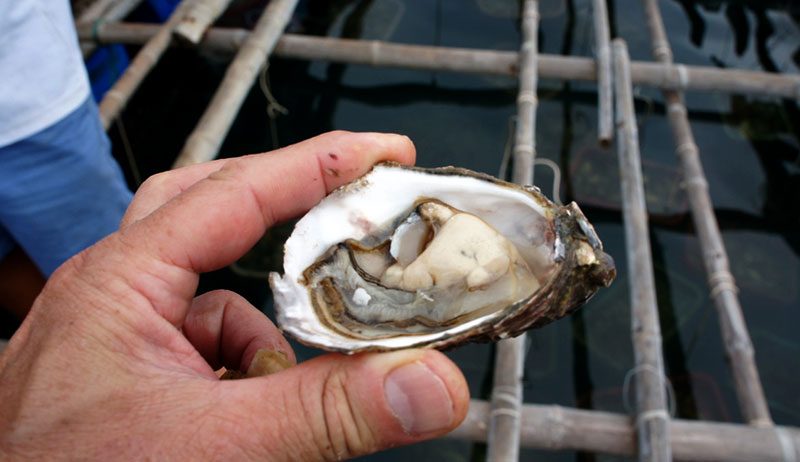
22. Pandemic-hit Oyster Farmers Turn to Conservation to Survive
When the pandemic hit, oyster farmers found the restaurants that sold their bivalves had largely closed. Without a new market, oyster farmers faced potential economic ruin. The Nature Conservancy in partnership with The Pew Charitable Trusts was buying millions of bivalves around the country for rebuilding decimated oyster reefs. The program, known as Supporting Oyster Aquaculture and Restoration or SOAR, is spending $2 million from an anonymous donor to buy more than 5 million oysters in New England, the Mid-Atlantic, and Washington state to restore shellfish reefs at 20 locations. The Nature Conservancy is coordinating its efforts with the National Oceanic and Atmospheric Administration and U.S. Department of Agriculture, which offered similar but smaller programs in several states. The SOAR program was launched in October with a goal of helping more than 100 oyster farmers, many who lost as much as 90% of their business during the pandemic.




